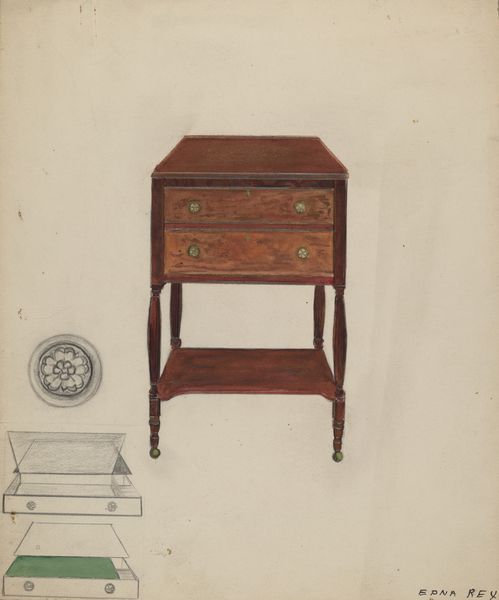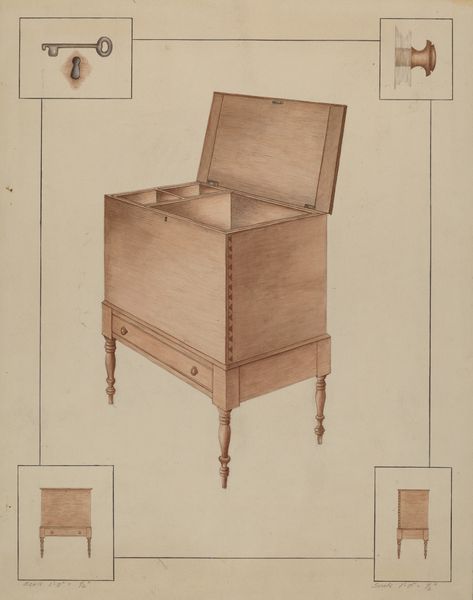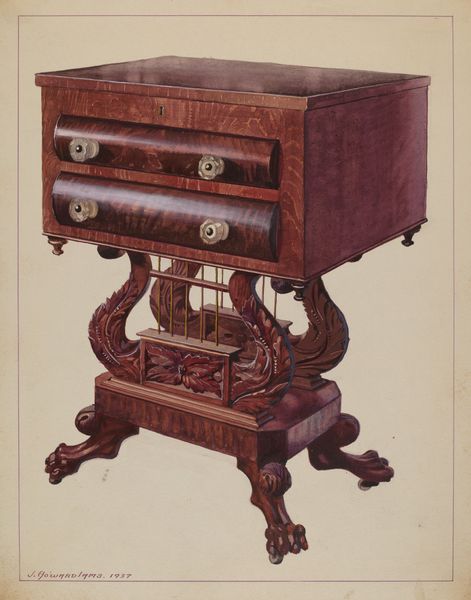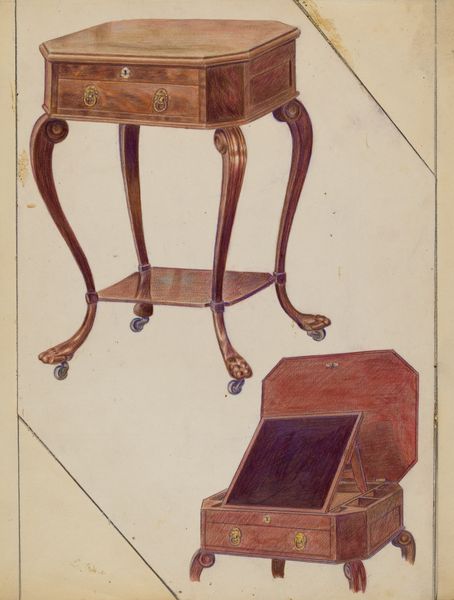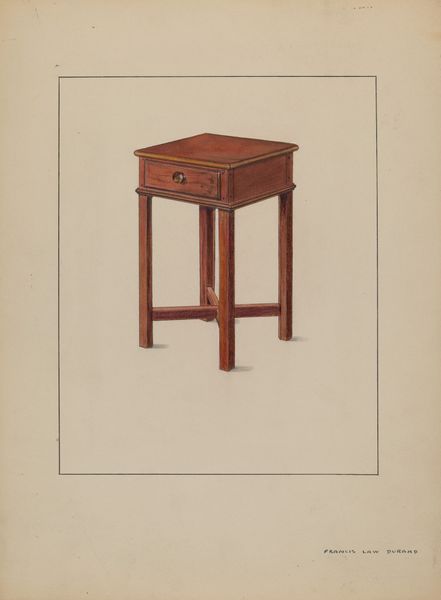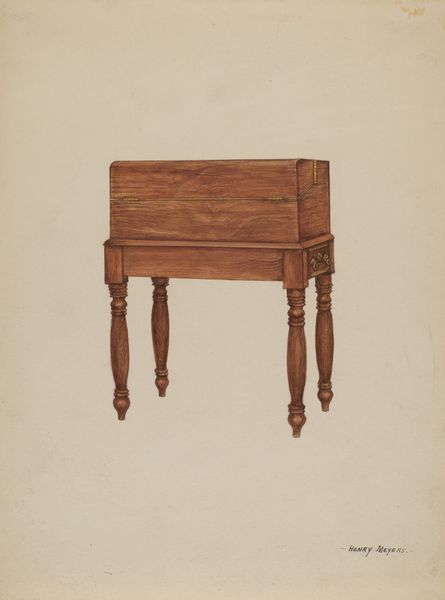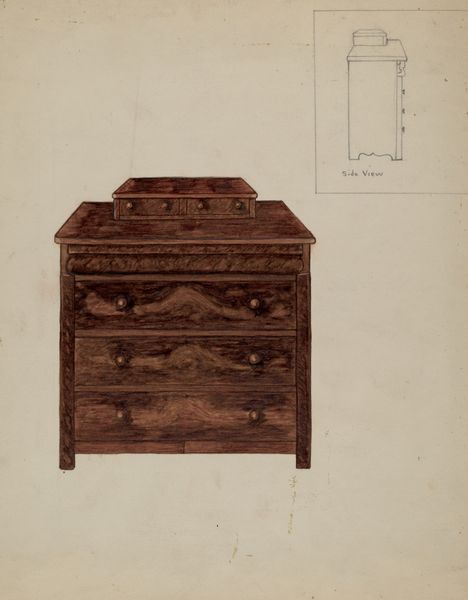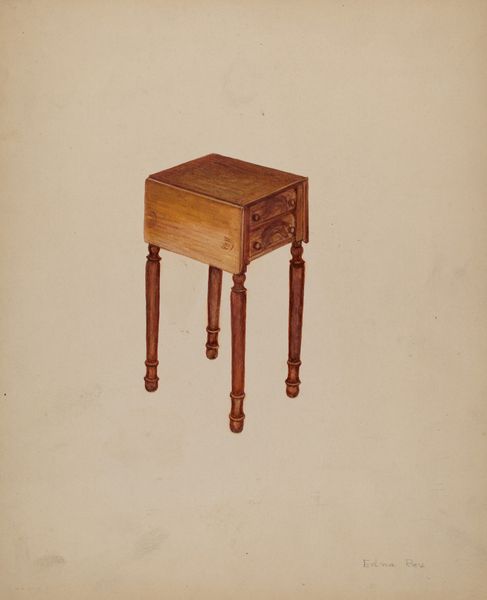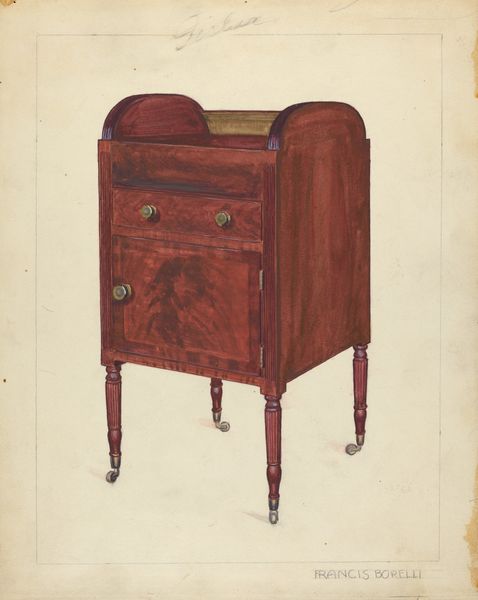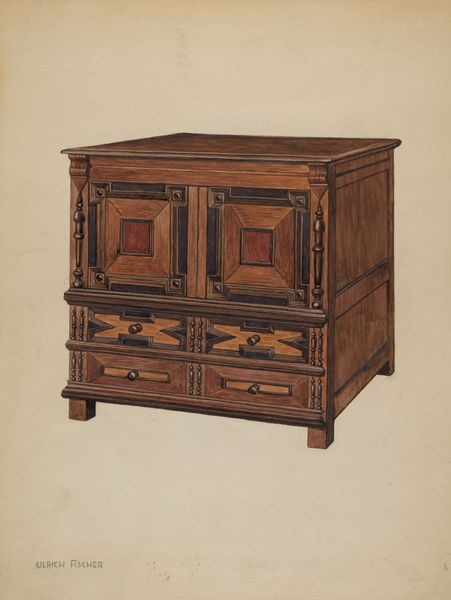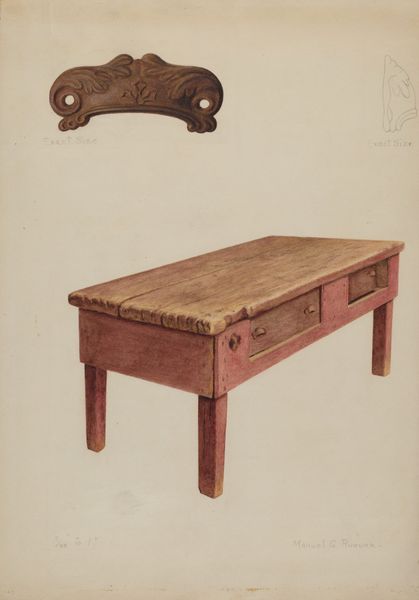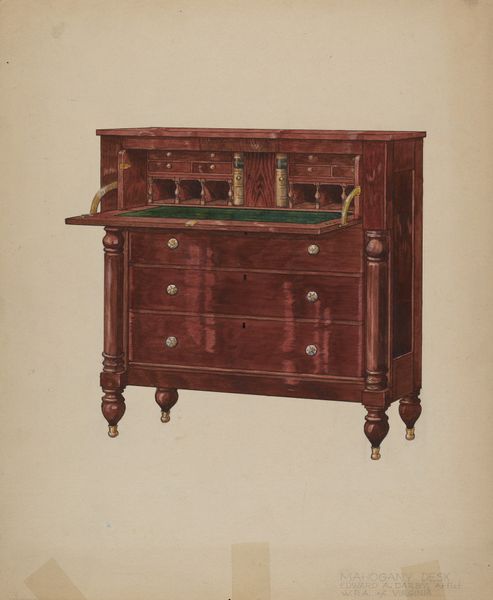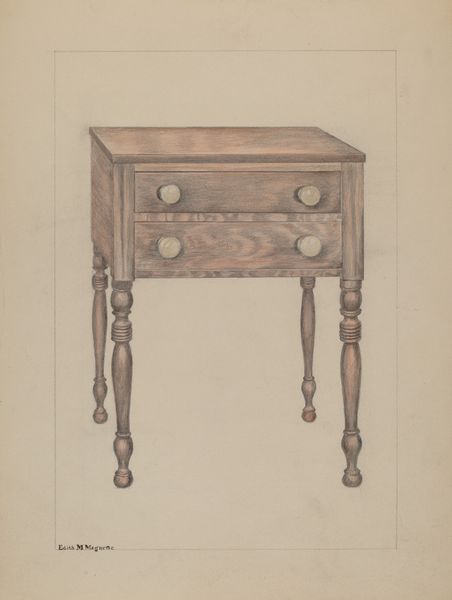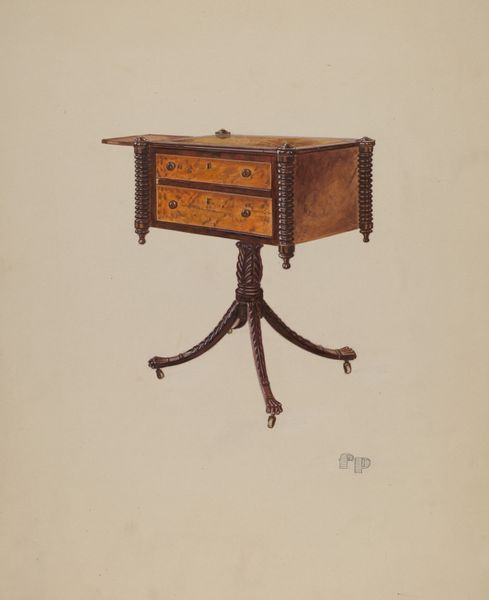
drawing, paper, pencil
#
drawing
#
paper
#
geometric
#
pencil
#
academic-art
#
watercolor
Dimensions: overall: 28.2 x 22.4 cm (11 1/8 x 8 13/16 in.) Original IAD Object: 28"high; 20"wide; 20 3/4"deep
Copyright: National Gallery of Art: CC0 1.0
Curator: Here we have a drawing entitled "Dropleaf Table," rendered circa 1936 by Alfred Walbeck. The medium appears to be pencil and watercolor on paper. Editor: My first impression is its quiet elegance. There's a remarkable symmetry, even though it is an illustration of an object we often take for granted. It's meticulously rendered, down to the gradations of shade indicating the light source. Curator: The precision certainly stands out. Walbeck utilizes geometric forms, focusing on lines and shape, to capture the essence of the table’s design. Observe the orthogonal projections and sectional views neatly aligned on the page. How do you interpret that aspect? Editor: It tells a story about the societal value placed on functional art during that era. The Great Depression created a drive towards utility; this drawing almost acts as a sales blueprint, illustrating both form and practical functionality, fitting well in that historical context. Curator: I find that interpretation quite interesting. But focusing on purely visual language, there’s also the relationship between line and form, a sophisticated use of watercolor wash for tone. Even the choice of pale, neutral background serves to emphasize the subject. Editor: Good point. This precise drawing of a rather common object – the Dropleaf Table – in the 1930s speaks to me about accessibility of well designed furnishings, aiming to portray attainable beauty even amid social hardship. It makes a point about class. Curator: Do you think that affects your interpretation of the overall work, this element of class politics that you mentioned? Editor: In many ways. I see the intent of showing that beauty and good design can, and perhaps should, exist at every level of society. Curator: Very thought provoking. Thinking about this from a visual perspective now and also a broader political position… perhaps our differing lenses both find resonance here. Editor: Absolutely, there are many doors into this, um, "table" then!
Comments
No comments
Be the first to comment and join the conversation on the ultimate creative platform.
